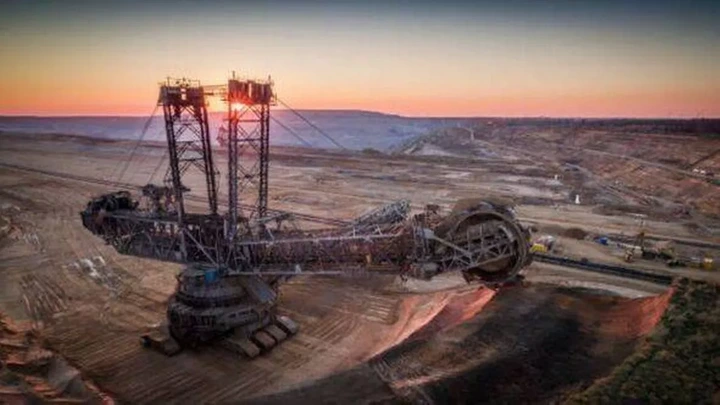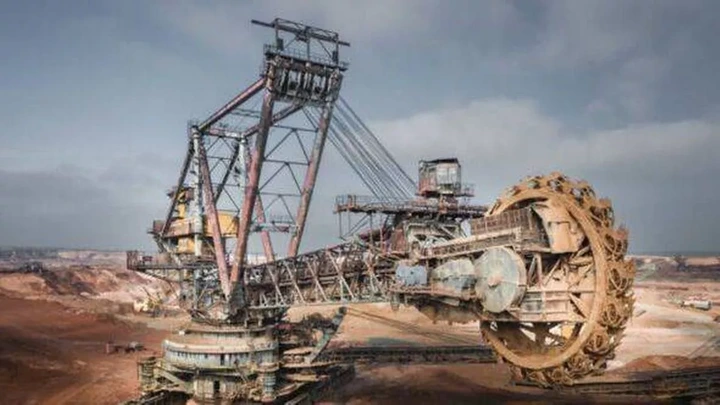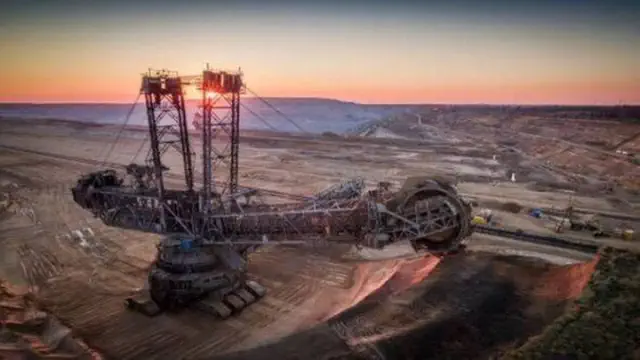The Bagger 288, a mobile strip mining machine created by Krupp for the energy and mining company Rheinbraun, holds the title of the largest land vehicle on the planet. It has an impressive weight of 13,500 tons and reaches a height of more than 300 feet.

View pictures in App save up to 80% data.
The Bagger 288, the world's largest land vehicle, is a colossal excavator that stands taller than the Statue of Liberty and weighs more than the Eiffel Tower.
This mobile strip mining machine, known as a bucket-wheel excavator, was built by the German company Krupp for the energy and mining corporation Rheinbraun.
When it was finished in 1978, this colossal machine surpassed Big Muskie to become the heaviest land vehicle in the world, tipping the scales at 13,500 tons and towering over 300 feet in height. The entire process of designing and manufacturing it spanned five years, followed by an additional five years for assembly, culminating in a total expenditure of $100 million (£80 million).
The Bagger 288 was designed exclusively for the purpose of stripping away overburden prior to coal extraction at the Hambach surface mine in Germany. This massive machine has the capability to excavate 240,000 tons of coal or 240,000 cubic meters of overburden each day, which is comparable to digging out a football field to a depth of 30 meters.
In a single day, the coal extracted fills a total of 2400 coal wagons. The excavator itself reaches a length of about 220 meters and stands approximately 96 meters tall.
Bagger 288 uses its revolving wheel of buckets as a shovel to continually shift 8.5 million cubic feet of dirt a day. Once it reaches a seam of brown coal, or lignite, it can harvest 265,000 tons of fuel a day, reports the Express US.

View pictures in App save up to 80% data.
Spanning more than 8,500 square feet, the treads of the Bagger are designed to support its massive weight of 13,000 tons while moving at a slow speed of just 0.4 miles per hour. The Bagger 288 is so immense that it is equipped with its own onboard restrooms and small kitchen areas.
The machine can be operated by just a team of five, which is notably less than what is typically needed for other machines of similar dimensions.
The bucket-wheel reaches a height comparable to a seven-story skyscraper, featuring 18 buckets that each weigh 7,700 pounds when not loaded. This impressive structure is adorned with nearly 90,000 pounds of paint, and it comprises two pylons that soar to 148 feet in height, along with 7,218 feet of robust steel suspension cables.
The Bagger 288 belongs to a lineup of comparably sized and designed machines, which includes the Bagger 281 (manufactured in 1958), Bagger 285 (1975), Bagger 287 (1976), and Bagger 293 (1995).










